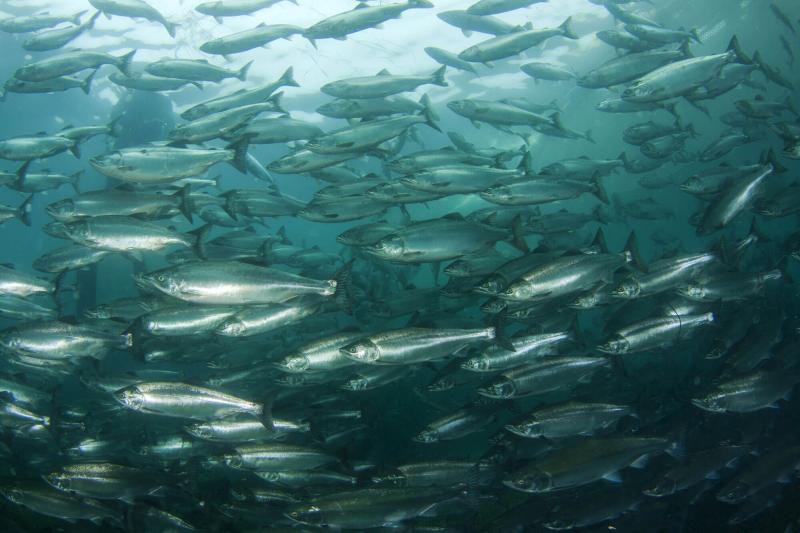All but the most resilient marine species off the West Coast are likely to be vulnerable to climate change, according to a new NOAA Fisheries assessment. It will help inform fisheries management and species protections as the climate changes in the coming decades.
The assessment found that nearly all commercial fish stocks overseen by the Pacific Fisheries Management Council are vulnerable to climate change. Species with complex life histories, long life spans, or of high commercial value are the most vulnerable to the effects of climate change in the California Current.
“We are looking forward, and we see that changes in these species may be the rule rather than the exception,” said Michelle McClure, lead author of the assessment who did much of the work while at the Northwest Fisheries Science Center in Seattle. “The goal is to anticipate the changes and make more climate-informed management decisions, and this assessment should help.”
Scientists are currently documenting the shift of marine species north or into deeper, cooler waters, as they follow their preferable temperatures. Such shifts are likely to become more widespread as climate change continues. Depressed oxygen levels, known as hypoxia, may also become more common and take a toll on bottom-dwelling species. These species cannot move very far or fast to avoid these low-oxygen areas.
Endangered Species Vulnerable
Several species listed under the Endangered Species Act (ESA), including many salmon and southern green sturgeon, are highly vulnerable.
The assessment applied an established NOAA Fisheries framework to 64 federally managed species in the California Current Ecosystem along the West Coast. It found that the most vulnerable species are those with the following:
- Complex life histories that utilize a wide range of freshwater and marine habitats
- Habitat specialization, particularly for areas that are likely to experience increased hypoxia
- Long lifespans and low population growth rate
- Being of high commercial value combined with impacts from non-climate stressors such as human-caused habitat degradation
The assessment follows a more spatially specific 2019 Climate Vulnerability Assessment for Pacific salmon Evolutionarily Significant Units, which is the scale at which they are managed under the ESA. That assessment found salmon resilience has been compromised by population declines from the impacts of dams, habitat loss, and hatcheries that produce fish less fit than their wild counterparts. However, the earlier assessment found that habitat restoration may help provide salmon with some resilience to changing conditions.
The new assessment examines salmon species but does not break down the salmon analysis by individual stocks, such as the 2019 research paper.
Majority of Species Sensitive to Climate Change
The experts scored each species as low, moderate, high, or very high for its sensitivity to climate change. Scores were based on each species’ life history, exposure to climate change, and overall ability to cope with expected changes. Then, in a workshop, the experts shared and discussed their scores before submitting final evaluations. Of the 64 species in the new analysis, 67 percent were at least moderately vulnerable to climate change, while 23 percent were highly or very highly vulnerable.
“This assessment is based on our best expertise and science, and builds on earlier knowledge about the sensitivity and habitat needs of individual species,” said Melissa Haltuch, research scientist at the Northwest Fisheries Science Center at the time of this study and coauthor of the assessment.
Scientists from NOAA Fisheries Northwest and Southwest Fisheries Science Centers worked with partners from the University of California Davis and Santa Cruz, and the U.S. Geological Survey to conduct the multi-year assessment. It is part of a series of Climate Vulnerability Assessments that NOAA Fisheries conducts to better prepare for and respond to rapidly changing ocean ecosystems. The first, the Northeast Fish and Shellfish Climate Vulnerability Assessment, was published in 2016. Vulnerability assessments for fisheries-related species in the Eastern Bering Sea, West Coast salmon, and fisheries-related species in the Pacific Islands region followed it. We are also completing Climate Vulnerability Assessments for fisheries-related species in the South Atlantic and the Gulf of Mexico. Additional assessments are being completed for marine mammals in the Northwest Atlantic, Caribbean and Gulf of Mexico, and in the Arctic and Pacific; a global sea turtle assessment is also underway.



